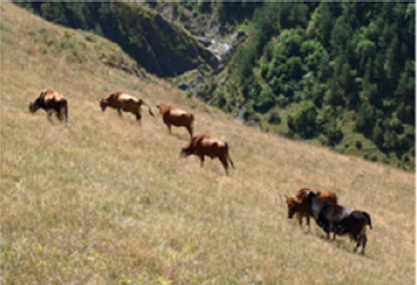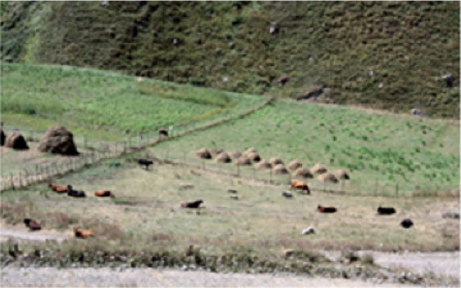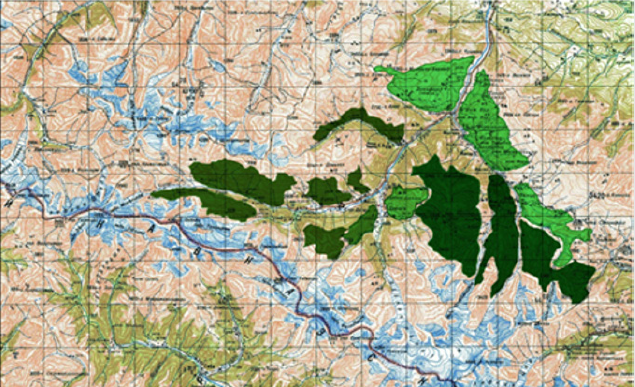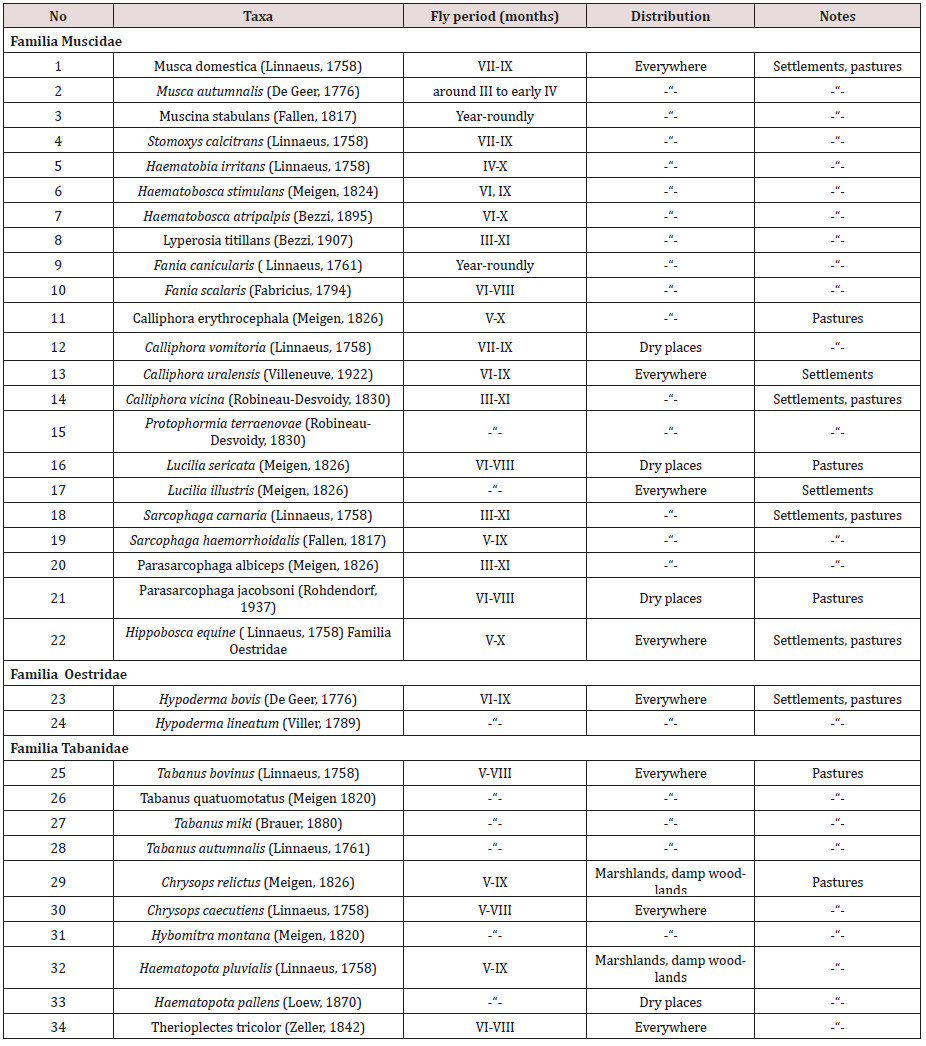
Lupine Publishers Group
Lupine Publishers
Menu
ISSN: 2637-4749
Research Article(ISSN: 2637-4749) 
The Most Mass Dipterous Insects–Cattle’s Parasites in Mountain Digoria Volume 2 - Issue 4
Vitaly Dobronosov*
- Department of Science, Federal State Budgetary Institutions, National Park Alania, Russia
Received: April 01, 2019; Published: April 12, 2019
Corresponding author: Vitaly Dobronosov, Department of Science, Federal State Budgetary Institutions, National Park Alania, Russia
DOI: 10.32474/CDVS.2019.02.000143
Abstract
Traditionally in Mountain Digoria there were engaged in distant-pasture and pastoral livestock production both in the summer, and in the winter. As a result of our researches from 1994 to 2018 using the standard methods of visual observations, collecting, photo fixing and cameral processing of entomological materials in mountain Digoria were caught and defined 34 species of zoophilous flies. These flies are one of the most widespread temporary parasites of cattle. The researches were conducted at near settlements and wild pastures. Taxonomical structure was created, and the list of the established species was made. Zoophilous flies causes stresses in pets, exhaust a lot of blood, put morbid stings, extend causative agents of infectious and invasive diseases, and are the intermediate owners of helminths, spoil products, forages, increase a bacterial infectiousness of milk and dairy products. In mountain Digoria where the distant-pasture and pastoral livestock production and production of meat and dairy products are important in life support of the population, such knowledge is necessary.
Keywords: Mountain Digoria; Zoophilous Flies; Temporary Parasites of Cattle; Anthropogenic and Natural Biotopes; Near Settlements and Wild Pastures; Cattle Livestock
Introduction
In Mountain Digoriya traditionally were engaged in distantpasture and pastoral livestock production. There were engaged in distant-pasture and pastoral livestock production both in the summer, and in the winter. Cattle, except milk cows, was contained in the winter on distant pastures on which prepared hay in the summer. Here owners, in turn, the cattle contained. Such period proceeded 5-6 months. In the summer in these parts animals were grazed, generally off-hand the person. Escaping of these natural boundaries, in crevices between rocks, were closed that the cattle did not return until late fall from there, wild animals in these parts met less often [1]. According to literary data, only one Haresskoe gorge in 1867 contained 919 heads of cattle, in 1870-1000 heads [2]. The total area of natural fodder grounds occupies 22.8% of all farmlands. As a part of these grounds’ mountain haymaking has and pastures prevail. In mountain Digoriya the cattle are grazed on droughty (Figure 1), dry (Figure 2) and damp (Figure 3) pastures and on pastures near settlements (Figure 4). The cattle breeding traditionally served and continues to be still a source to dairy and meat products. At the same time traditional, extensive methods continue to be applied. According to 2018, the general number of cattle in all mountain Digoria made 1512 heads. Zoophilous flies are one of the most widespread temporary parasites of animals who have great epizootological, epidemiological value and put the considerable economic damage to livestock production [3-10]. The epizootological value is by the fact that flies cause stresses in pets, exhaust a lot of blood, put morbid stings, extend causative agents of infectious and invasive diseases, and are the intermediate owners of helminths, spoil products, forages, increase a bacterial infectiousness of milk and dairy products. The damage caused to cattle by skin botflies diseases when each cow does not give the rest of 50-80 liters of milk is well known. Specific structure of the zoophilous flies features of their distribution, biology, ecology in the conditions of anthropogenic and natural biotopes in the territory of mountain Digoria are studied insufficiently.
Purpose of the Study
The purpose of the research was identification of the most mass dipterous insects which are the cattle’s parasites in mountain Digoria.
Materials and Methods
The Study Area
The research was conducted in mountain Digoria, Republic North Ossetia-Alania, and Russian Federation from 1994 to 2018 from March to September months. The map-scheme of study area is shown in the geographical map (Figure 5).
Materials and equipment: References (see the List of references), cameras digital (Samsung ES28, Sony DSH-H300), air entomological nets, killing jars, setting boards, pins, tweezers, etc., a binocular microscope of MBS-1.
Methods: The standard methods of visual observations and collecting biomaterial, photo fixing and cameral processing of entomological materials [11].
For achievement of the purpose of this research, the following tasks were carried out:
a) Field and cameral researches at settlements and pastures were conducted;
b) The taxonomical structure was created, and the list of the established species was made (Table).
Results and Discussion
As a result, was defined the following taxonomical list of Diptera - cattle’s parasites (Table ).
Muscidae family contains 22 species (Figure 6 (1-22)), 16 from which meet on all types of pastures both on natural, and on pastures near settlements, 4 – on pastures only (3 – on dry, 1 – on all types) and 2 species - on pastures near settlements and in stalls. To Oestridae family belong 2 species (Figure 6 (23, 24)); they meet on all types of pastures - natural and on pastures near settlements. Nabanidae family contains 10 species (Figure 6 (25-34)), 7 from which meet on all types of pastures, 2– in marshlands, damp woodlands, 1– in dry places; all of them meet only on pastures both on natural, and on pastures near settlements.
Figure 6: dipterous insects (Diptera).
Numbering of images corresponds to numbering of species in the table.
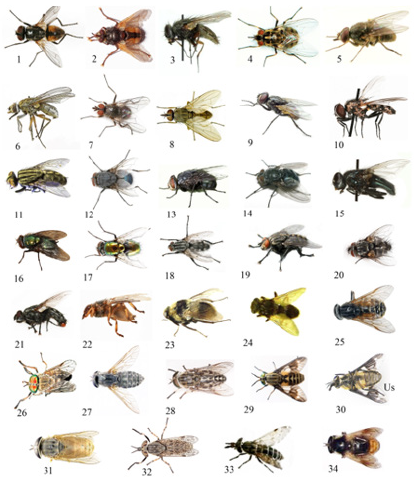
Conclusion
During researches 34 species of the most mass dipterous insects (Diptera), which are the cattle’s parasites in mountain Digoria we identified. All of them can cause various diseases and reduce efficiency of cattle.
In the conditions of mountain Digoriya where the distantpasture and pastoral livestock production and production of meat and dairy products play the leading role in life support of the population, such knowledge is extremely necessary.
References

Top Editors
-

Mark E Smith
Bio chemistry
University of Texas Medical Branch, USA -

Lawrence A Presley
Department of Criminal Justice
Liberty University, USA -

Thomas W Miller
Department of Psychiatry
University of Kentucky, USA -

Gjumrakch Aliev
Department of Medicine
Gally International Biomedical Research & Consulting LLC, USA -

Christopher Bryant
Department of Urbanisation and Agricultural
Montreal university, USA -

Robert William Frare
Oral & Maxillofacial Pathology
New York University, USA -

Rudolph Modesto Navari
Gastroenterology and Hepatology
University of Alabama, UK -

Andrew Hague
Department of Medicine
Universities of Bradford, UK -

George Gregory Buttigieg
Maltese College of Obstetrics and Gynaecology, Europe -

Chen-Hsiung Yeh
Oncology
Circulogene Theranostics, England -
.png)
Emilio Bucio-Carrillo
Radiation Chemistry
National University of Mexico, USA -
.jpg)
Casey J Grenier
Analytical Chemistry
Wentworth Institute of Technology, USA -
Hany Atalah
Minimally Invasive Surgery
Mercer University school of Medicine, USA -

Abu-Hussein Muhamad
Pediatric Dentistry
University of Athens , Greece

The annual scholar awards from Lupine Publishers honor a selected number Read More...




